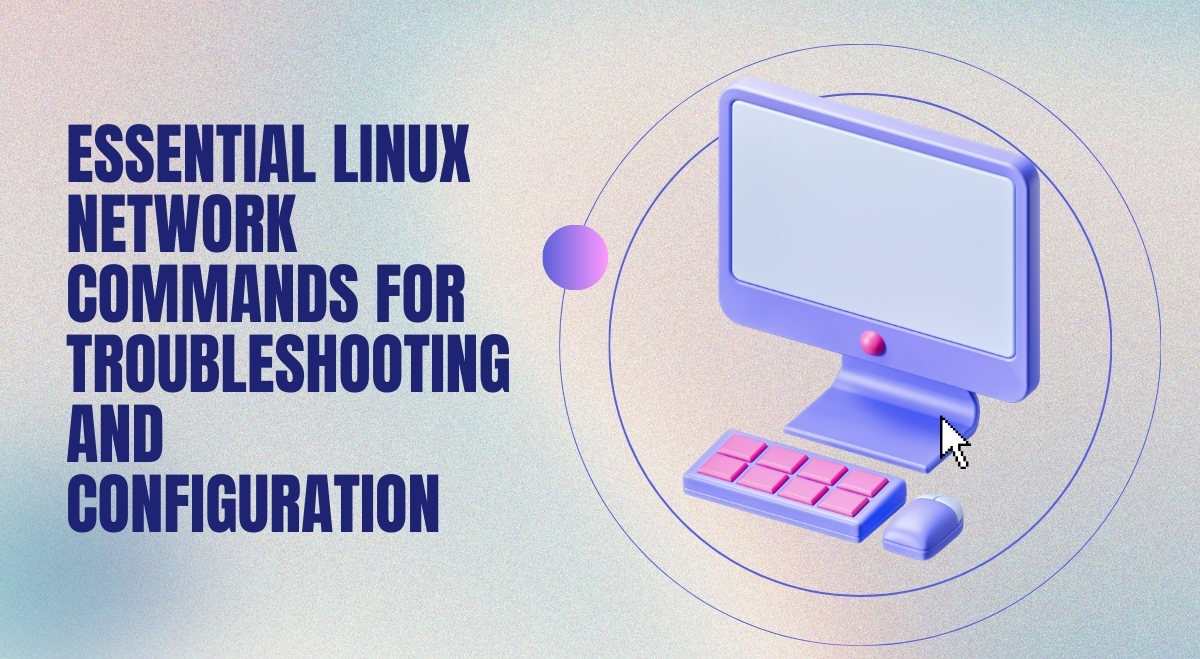Linux systems provide powerful tools for network troubleshooting and configuration. Whether you’re a system administrator, IT professional, or a tech-savvy individual managing a Linux server, understanding these essential commands can help you efficiently diagnose and resolve network issues. This guide will walk you through the most important Linux network commands and techniques for effective troubleshooting.
Checking Network Configuration
Before diving into troubleshooting, it’s crucial to understand your network configuration. Here are some key commands to help you examine your network settings:
ifconfig / IP
The ifconfig command displays network interface information, including IP addresses, MAC addresses, and network statistics. However, on modern Linux distributions, the ip command is preferred:
ip addr show
This command will display detailed information about all network interfaces, including their IP addresses and status.
Examining DNS Settings
To check your system’s DNS configuration, you can view the contents of the /etc/resolv.conf file:
cat /etc/resolv.conf
This file contains the IP addresses of your configured DNS servers.
Essential Network Troubleshooting Commands
Now, let’s explore the most important commands for diagnosing network issues:
ping
The ping command is used to test network connectivity to a specific host:
ping google.com
This sends ICMP echo requests to the specified host, helping you determine if you can reach it and measure round-trip time.
traceroute
traceroute shows the path that packets take to reach a destination:
traceroute google.com
This command helps identify where connection problems might be occurring along the network path.
netstat / ss
These commands display network connections, routing tables, and network interface statistics:
ss -tuln
This shows all TCP and UDP listening ports, which is useful for identifying which services are running on your system.
nslookup / dig
These tools are used for querying DNS servers:
dig google.com
The dig command provides detailed DNS information, including the IP address associated with a domain name.
Diagnosing Connectivity Issues in Linux
When troubleshooting network problems, follow these steps:
- Test local network connectivity
- Verify internet connectivity
- Identify routing problems
Testing Local Network Connectivity
Start by pinging your default gateway:
ping $(ip route | grep default | awk '{print $3}')If this fails, you may have a local network issue.
Verifying Internet Connectivity
Ping a well-known external IP address, such as Google’s DNS server:
ping 8.8.8.8
If this succeeds but you can’t reach websites by name, you likely have a DNS issue.
Identifying Routing Problems
Use the traceroute command to see where packets might be getting lost:
traceroute google.com
This can help pinpoint where in the network path issues are occurring.
Firewall Troubleshooting in Linux
Linux Firewalls can sometimes interfere with network connectivity. Here’s how to check and temporarily disable the firewall for testing:
Checking Firewall Rules
On systems using iptables, you can list all current rules:
sudo iptables -L
For systems using firewalld, use:
sudo firewall-cmd --list-all
Temporarily Disabling Firewall
To temporarily disable the firewall for testing (use with caution):
For iptables:
sudo iptables -F
For firewalld:
sudo systemctl stop firewalld
Remember to re-enable your firewall after testing.
Common Network Issues and Solutions
Here are some frequent network problems and how to address them:
IP Address Conflicts
If you suspect an IP address conflict, you can use the arping command:
sudo arping -I eth0 192.168.1.100
Replace eth0 with your network interface and 192.168.1.100 with the suspected conflicting IP.
DNS Resolution Problems
If you’re having trouble resolving domain names, try updating your DNS servers in /etc/resolv.conf or your network configuration files.
Incorrect Network Settings
Double-check your network settings using the ip command and compare them with your network documentation. Incorrect subnet masks or default gateways are common issues.
Advanced Troubleshooting Techniques
For more complex issues, consider these advanced techniques:
Using Packet Capture Tools
The tcpdump command allows you to capture and analyze network traffic:
sudo tcpdump -i eth0 -n
This captures packets on the eth0 interface and display them in a readable format.
Analyzing System Logs
Check system logs for network-related issues:
journalctl -u NetworkManager
This command displays logs related to the NetworkManager service, which can provide insights into network configuration problems.
Best Practices for Network Maintenance
To prevent network issues:
- Perform regular network health checks using the commands we’ve discussed.
- Keep your system and network drivers updated.
- Document your network configuration for easy reference.
- Implement monitoring tools to alert you of potential issues before they become critical.
With these essential Linux network commands and techniques, you’ll be well-equipped to troubleshoot and maintain your Linux server’s network settings efficiently. Remember to approach network issues systematically, starting with basic connectivity tests and progressing to more advanced diagnostic tools as needed.

